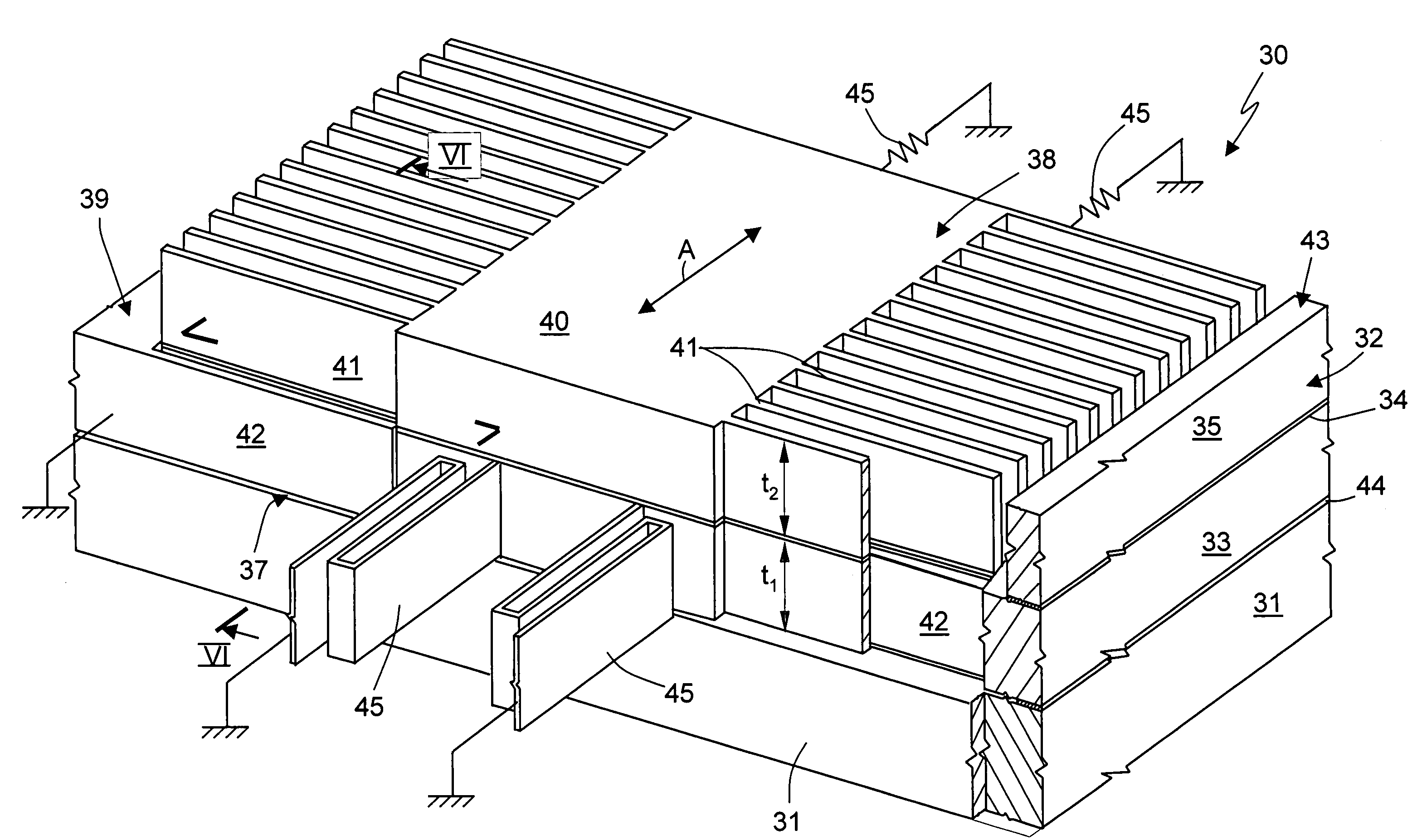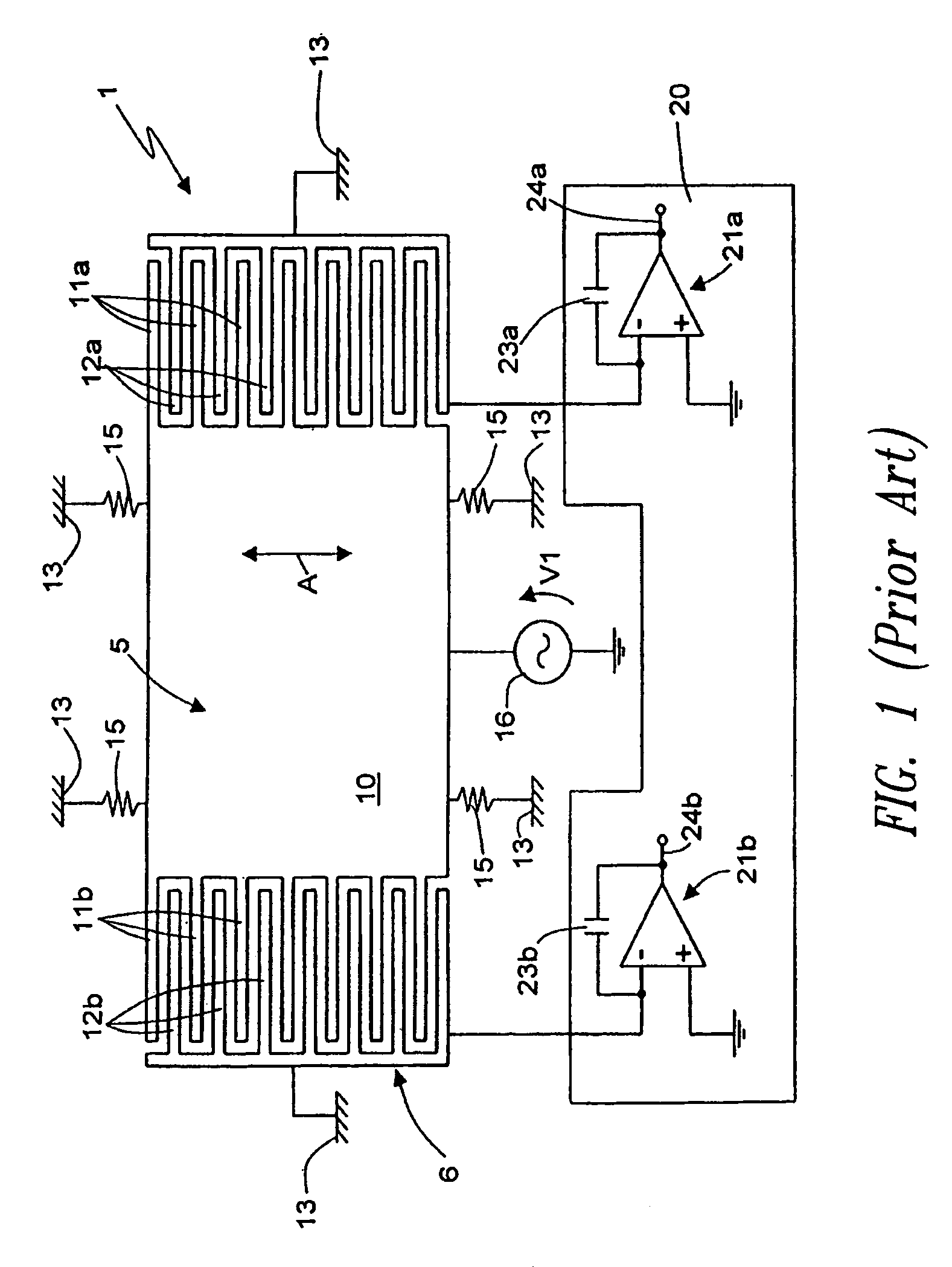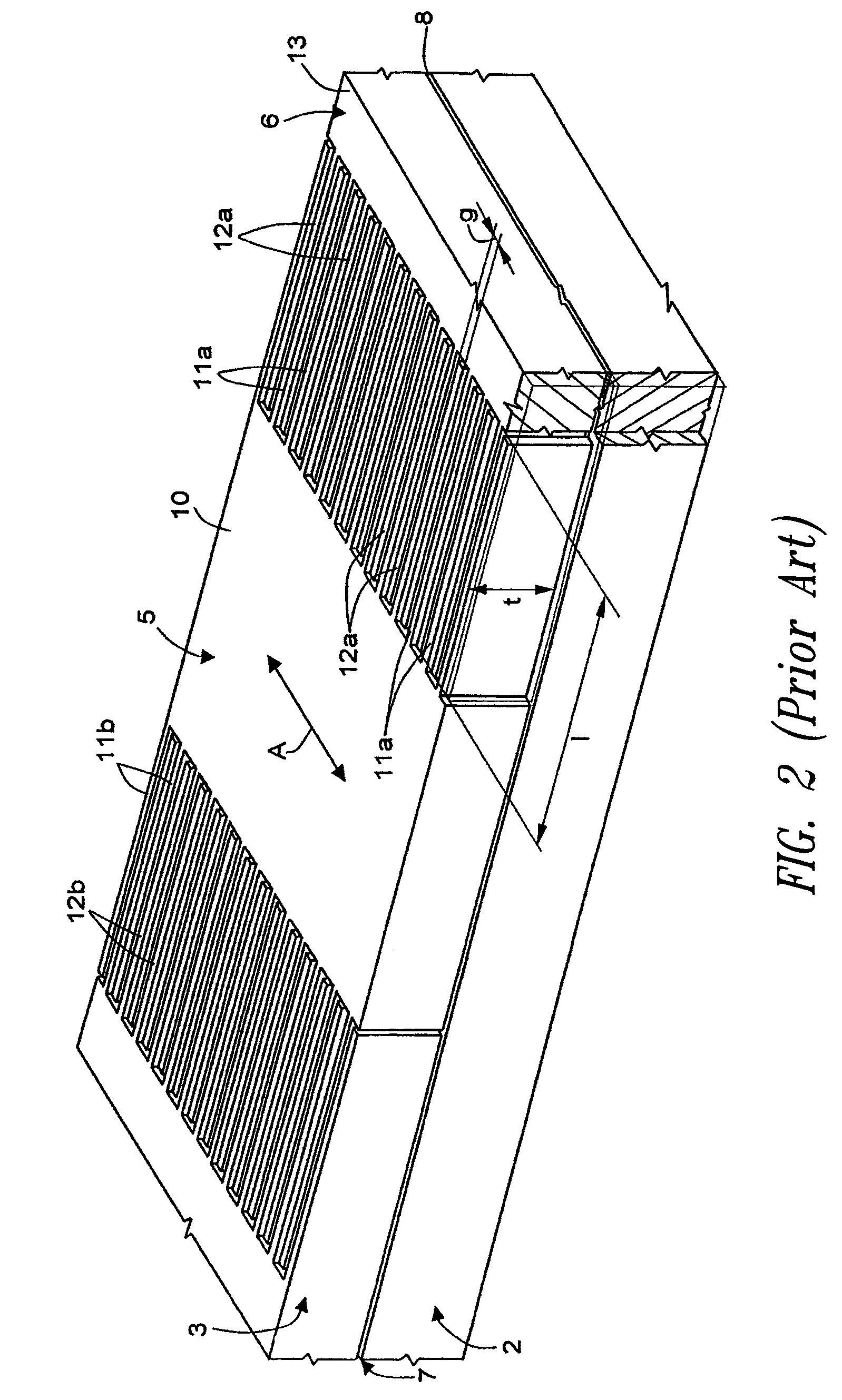BMEMS-type high-sensitivity inertial sensor and manufacturing process thereof
a high-sensitivity inertial sensor and manufacturing process technology, applied in the direction of acceleration measurement using interia forces, speed measurement using gyroscopic effects, electric/magnetic means, etc., can solve the problem of reducing the capacity to reject movement in other directions, countering the improvement in sensor sensitivity, and increasing the thickness of the system
- Summary
- Abstract
- Description
- Claims
- Application Information
AI Technical Summary
Benefits of technology
Problems solved by technology
Method used
Image
Examples
Embodiment Construction
[0040]With reference to FIG. 5, an inertial sensor 30 comprises a body of semiconductor material formed by a substrate 31 and by a structural layer 32, overlying one another. In the example illustrated, the structural layer 32 is formed by a stack of layers including a bottom semiconductor layer 33, an intermediate dielectric layer 34, and a top semiconductor layer 35. As in the known inertial sensor 1, a rotor 38 and a stator 39 are formed in the structural layer 32; the rotor 38 is moreover supported by elastic elements or springs 45.
[0041]As may be noted, here the rotor 38 has a thickness greater than that of the stator 39 and of the springs 45. In fact, the rotor 38 is formed by all the layers 33-35 of the structural layer 32, while the stator 39 and the springs 45 are formed by just the bottom semiconductor layer 33, as is evident particularly from the cross-section of FIG. 6. The rotor 38, the stator 39, and the springs 45 are also here arranged at a distance from the substrat...
PUM
 Login to View More
Login to View More Abstract
Description
Claims
Application Information
 Login to View More
Login to View More - R&D
- Intellectual Property
- Life Sciences
- Materials
- Tech Scout
- Unparalleled Data Quality
- Higher Quality Content
- 60% Fewer Hallucinations
Browse by: Latest US Patents, China's latest patents, Technical Efficacy Thesaurus, Application Domain, Technology Topic, Popular Technical Reports.
© 2025 PatSnap. All rights reserved.Legal|Privacy policy|Modern Slavery Act Transparency Statement|Sitemap|About US| Contact US: help@patsnap.com



